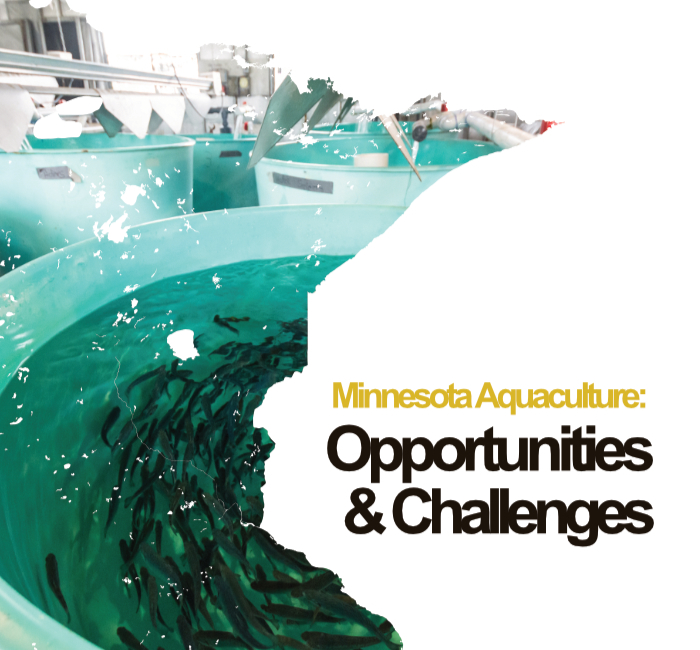Collaboration with Minneapolis marketing firm Russell Herder produces road map for investment, economic benefi
Aquaculture— the cultivation of fish and shellfish for food—is the fastest growing segment of global food production. The industry has a value of more than $160 billion and by 2030 production of farmed fish will reach 120 million tons, an increase of nearly a third since 2018. Globally, demand for seafood had doubled in the past 50 years as consumers look for additional protein sources.
These factors present exciting opportunities for Minnesota’s agricultural community. To better understand the current landscape and how the state’s ag sector can benefit, the Agriculture Utilization Research Institute recently published an original research report on the local aquaculture industry. The project was part of AURI’s annual Ag Innovation Partnership (AIP) program and conducted with the assistance of Russell Herder, a Minneapolis-based strategic marketing agency.
To compile the report, Russell Herder interviewed numerous scientists, researchers, educators, government officials, farmers and business owners across the Upper Midwest. The insight gained from these interviews resulted in a multi-layered and authoritative report. Several key take-aways arose from the interviews.
There is a strong consensus that Minnesota’s aquaculture industry can grow rapidly. To accelerate innovation and product development opportunities in an environmentally responsible and sustainable approach will require a collaborative approach among many stakeholders. Experienced producers, government agencies and technical experts must collaborate to identify challenges and work toward solutions.
A thriving food fish industry has many potential benefits for the state’s overall economy. For example, Minnesota crops can be used in the production of aquaculture feed and the fish and seafood waste streams from aquaculture facilities present other value-add opportunities.
With these opportunities, the aquaculture report also identified obstacles to overcome for the industry to reach its potential. These challenges include pairing species with effective production systems, developing disease management protocols, navigating complex and changing regulatory systems, having ready access to meaningful consumer market research, obtaining financing and establishing economically viable operations.
“Aquaculture has tremendous economic potential for agriculture and food businesses in our region. To realize those benefits will require the input of many stakeholders and a cohesive effort,” said Shannon Schlecht, the Executive Director for AURI. “Publishing this research report is an important step in working towards shared industry goals. We are grateful to the support and expertise of Russell Herder in compiling this report and look forward to putting the findings into action.”
AURI’s AIP program is a competitive selection process. Each year AURI puts out a call for submissions and businesses, entrepreneurs, researchers and producers are encouraged to submit a proposal. A panel of AURI staff members review and select projects based on the submissions that most align with AURI’s mission of supporting innovation and creating long-term economic impact.
The selected projects receive AURI resources, including funding and staff support, to help turn their ideas into public goods that can help catalyze innovation in the state’s agriculture industry.
For more information on the aquaculture report, or to download a copy, visit AURI’s website.
About AURI
The Agricultural Utilization Research Institute (AURI)’s mission is to foster long-term economic benefit through value-added agricultural products. It accomplishes this by using science and technology to help develop new uses for agricultural products. It collaborates with businesses and entrepreneurs to generate economic impact in Minnesota communities by helping them take advantage of innovative opportunities in four focus areas: biobased products, renewable energy, coproducts and food. AURI provides a broad range of services, including applied research and development, scientific assistance and a targeted network of resources to develop value-added uses for crops and coproducts. To learn more about AURI, visit auri.org.

